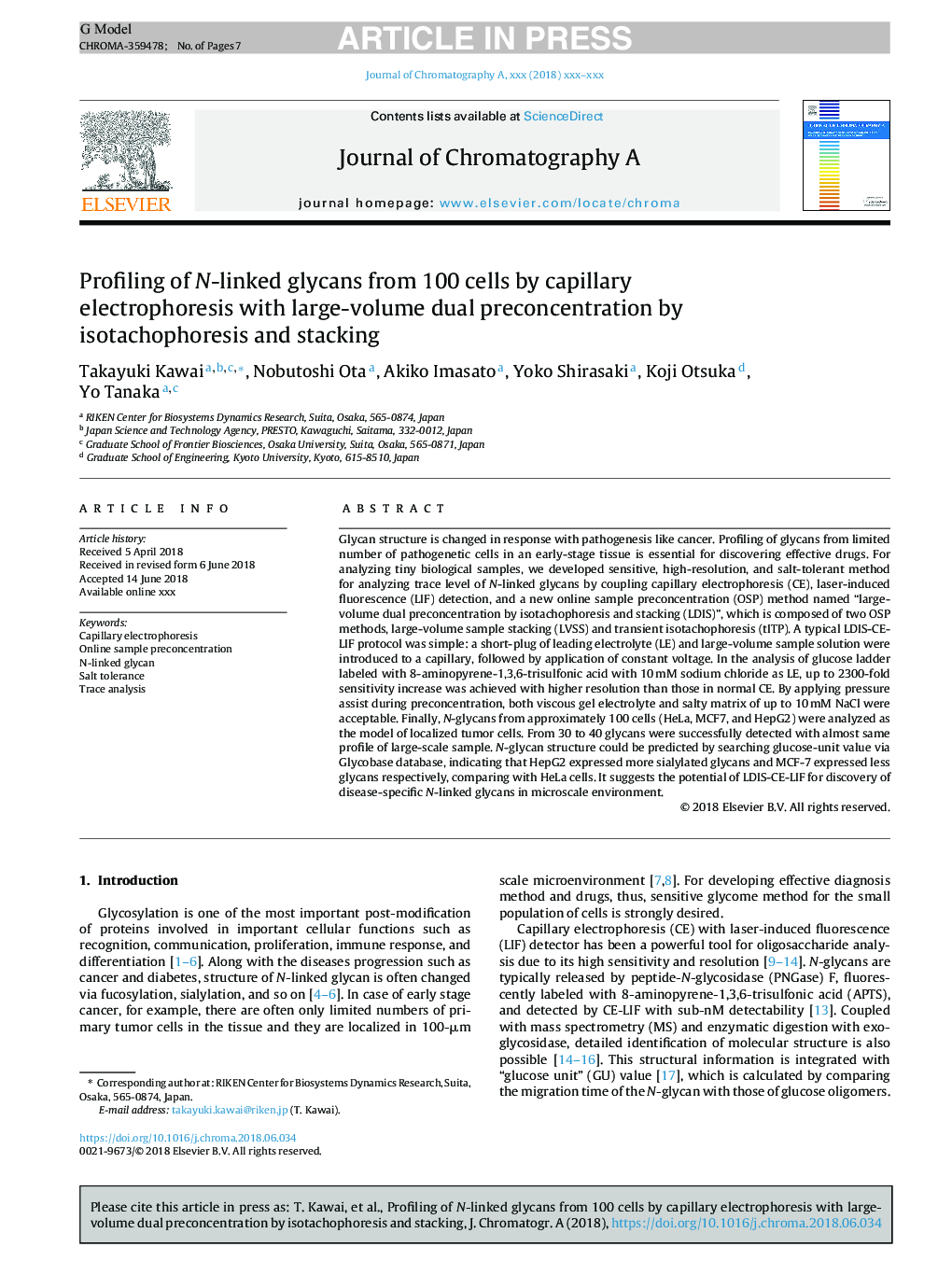| کد مقاله | کد نشریه | سال انتشار | مقاله انگلیسی | نسخه تمام متن |
|---|---|---|---|---|
| 7607559 | 1493361 | 2018 | 7 صفحه PDF | دانلود رایگان |
عنوان انگلیسی مقاله ISI
Profiling of N-linked glycans from 100 cells by capillary electrophoresis with large-volume dual preconcentration by isotachophoresis and stacking
دانلود مقاله + سفارش ترجمه
دانلود مقاله ISI انگلیسی
رایگان برای ایرانیان
کلمات کلیدی
موضوعات مرتبط
مهندسی و علوم پایه
شیمی
شیمی آنالیزی یا شیمی تجزیه
پیش نمایش صفحه اول مقاله

چکیده انگلیسی
Glycan structure is changed in response with pathogenesis like cancer. Profiling of glycans from limited number of pathogenetic cells in an early-stage tissue is essential for discovering effective drugs. For analyzing tiny biological samples, we developed sensitive, high-resolution, and salt-tolerant method for analyzing trace level of N-linked glycans by coupling capillary electrophoresis (CE), laser-induced fluorescence (LIF) detection, and a new online sample preconcentration (OSP) method named “large-volume dual preconcentration by isotachophoresis and stacking (LDIS)”, which is composed of two OSP methods, large-volume sample stacking (LVSS) and transient isotachophoresis (tITP). A typical LDIS-CE-LIF protocol was simple: a short-plug of leading electrolyte (LE) and large-volume sample solution were introduced to a capillary, followed by application of constant voltage. In the analysis of glucose ladder labeled with 8-aminopyrene-1,3,6-trisulfonic acid with 10â¯mM sodium chloride as LE, up to 2300-fold sensitivity increase was achieved with higher resolution than those in normal CE. By applying pressure assist during preconcentration, both viscous gel electrolyte and salty matrix of up to 10â¯mM NaCl were acceptable. Finally, N-glycans from approximately 100 cells (HeLa, MCF7, and HepG2) were analyzed as the model of localized tumor cells. From 30 to 40 glycans were successfully detected with almost same profile of large-scale sample. N-glycan structure could be predicted by searching glucose-unit value via Glycobase database, indicating that HepG2 expressed more sialylated glycans and MCF-7 expressed less glycans respectively, comparing with HeLa cells. It suggests the potential of LDIS-CE-LIF for discovery of disease-specific N-linked glycans in microscale environment.
ناشر
Database: Elsevier - ScienceDirect (ساینس دایرکت)
Journal: Journal of Chromatography A - Volume 1565, 31 August 2018, Pages 138-144
Journal: Journal of Chromatography A - Volume 1565, 31 August 2018, Pages 138-144
نویسندگان
Takayuki Kawai, Nobutoshi Ota, Akiko Imasato, Yoko Shirasaki, Koji Otsuka, Yo Tanaka,